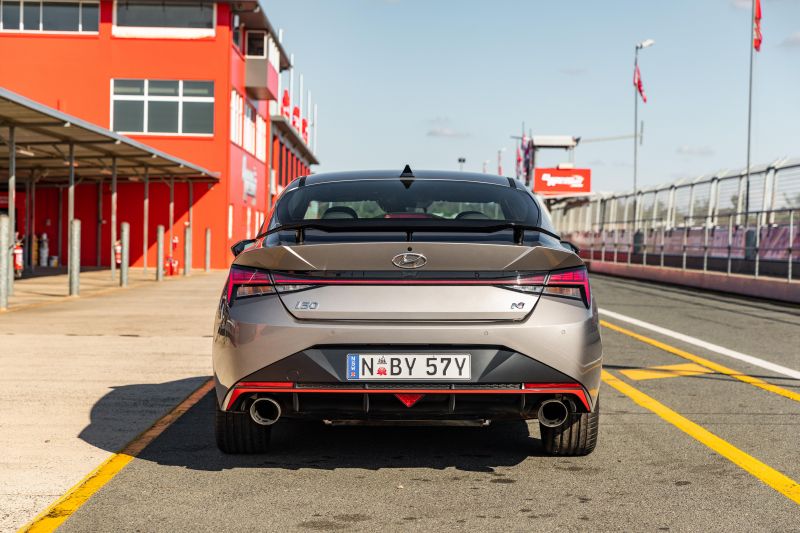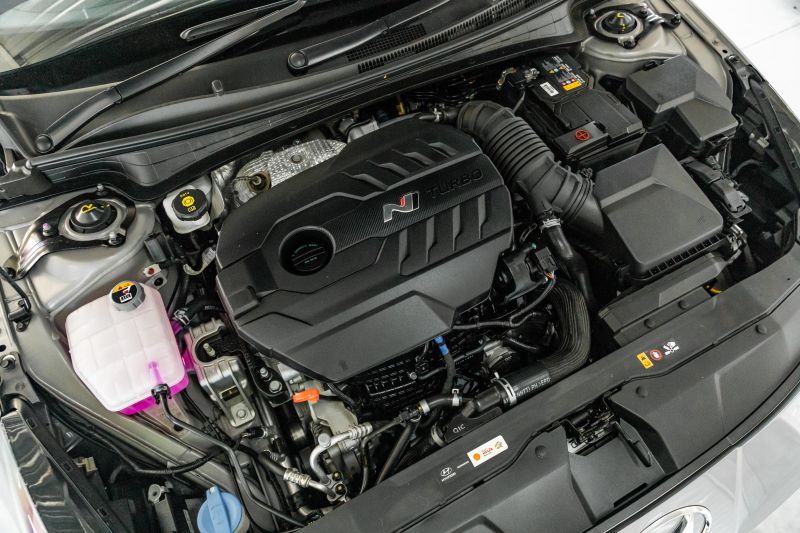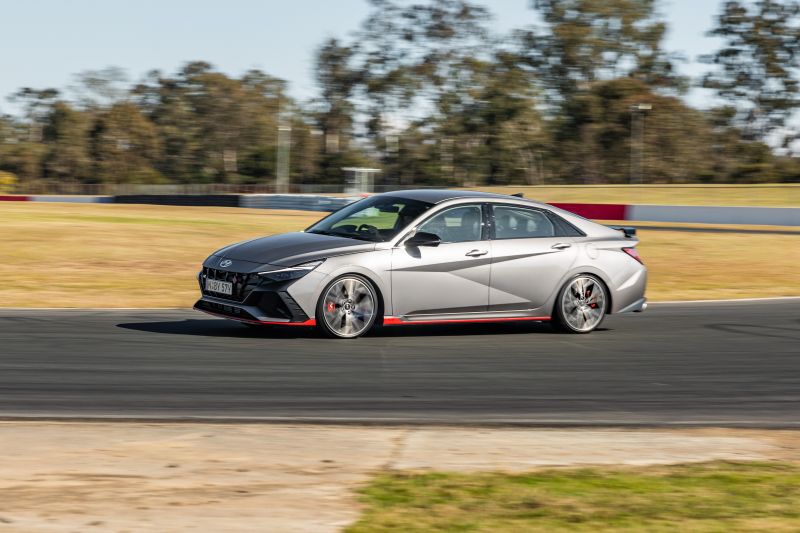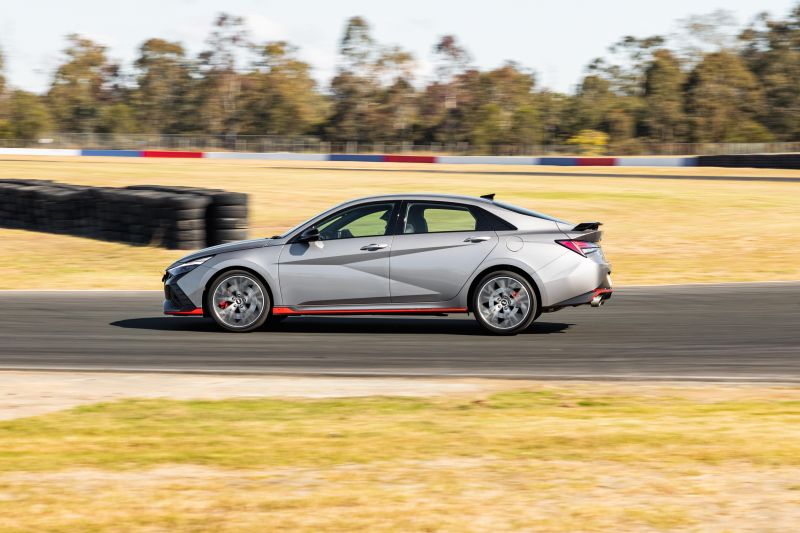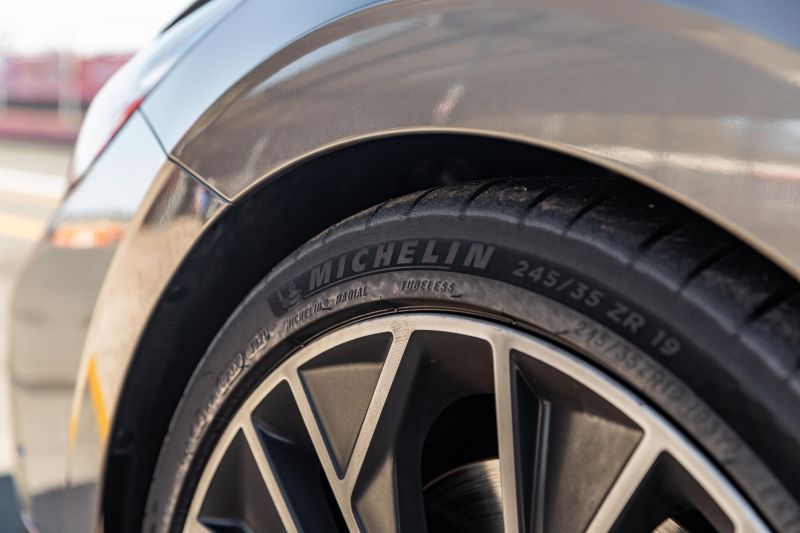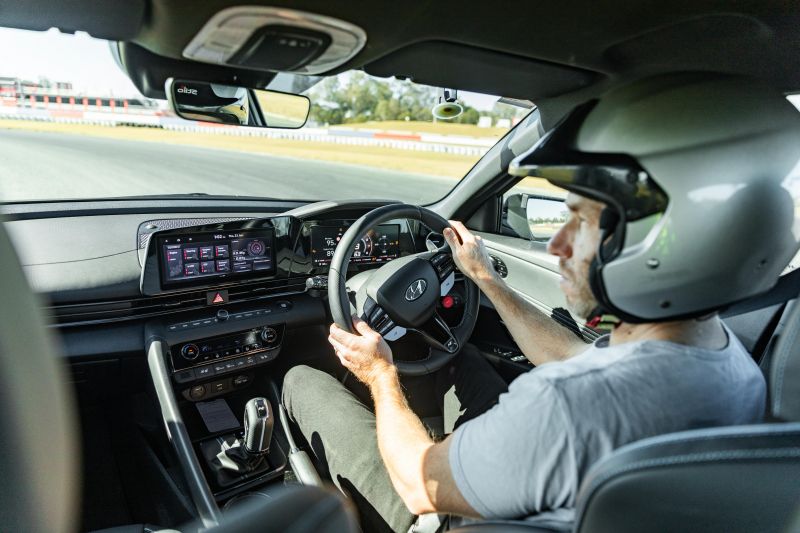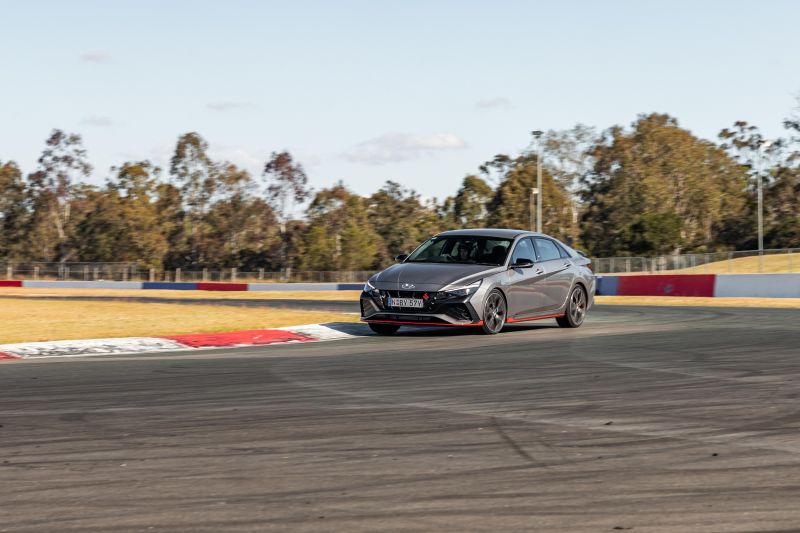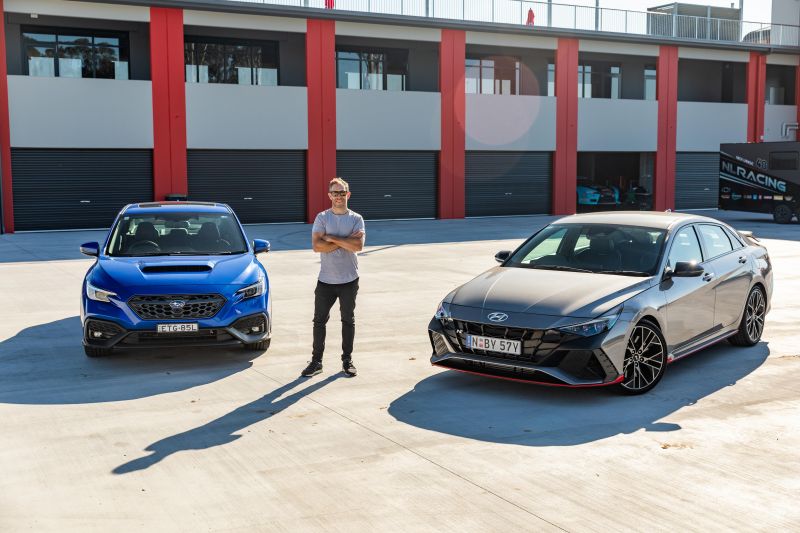Overall Road Performance
With the option of a DCT, Hyundai opens the door to a new market of drivers who can enjoy and explore the entertaining package that they have created.
On the road, the Hyundai i30 Sedan N is a dynamic driving experience that has been tuned to be capable across so many different environments.
Its ability to absorb bumps and follow steering inputs with ease gives the driver confidence every time they get behind the wheel.
It really becomes a tough choice with the new DCT transmission slotting perfectly into an already excellent package.
Overall Track Performance
We’ve already seen the latest Hyundai i30 Hatch Hatch N manual step up the game over the previous generation on the track.
Drawing on what they had learnt from the dynamics of the Hyundai i20 N, they extracted even more performance out of the i30 N chassis and engine.
Yet the big question remained – could Hyundai develop a dual clutch transmission (DCT) that kept the rawness of the experience and take the performance to another level?
Engine
The i30 Sedan N runs the same 2.0-litre turbocharged four-cylinder petrol engine as the i30 Hatch N, which is more flexible and driveable compared to previous iterations.
It develops 206kW of power and 392Nm of torque, with nice overlap of power and torque, creating a strong feeling across the whole rev range all the way to the shift point.
So much performance through just two wheels, means you still have to manage your power delivery out of the slow corners. But once you get the car straight, you can get aggressively on the throttle and it really gets moving.
Throttle control was very good too – I could manage the slightest hint of wheel spin with some subtle modulation of the throttle.
On my first and only good attempt it still did 0-100 km/h in 5.54 seconds, which is pretty good considering we weren’t on a grippy drag strip.
The DCT enhances the performance of the engine and you really feel like you’re in a little race, grabbing gears with the engine revving out with a real crispness.
Braking
Brake pedal feel in the i30 Sedan N was really good and the car was very stable under brakes, but I would like some more stopping power.
This was even more noticeable in the DCT version due to that bit of extra speed you are carrying over the manual.
Chassis
Its interesting to see the slight difference between the Hyundai i30 Sedan N and the Hatch with regards to dynamics.
The sedan feels that little bit more stable and has excellent balance in the high-speed corners, with some rotational oversteer that doesn’t get away from you. Part of this will be down to the i30 Sedan N’s newer, lighter platform compared to the older underpinnings of the i30 Hatch N.
This gave me the confidence to carry so much speed into the fast corners and be able to have such a late apex, making the mid corner speed very impressive.
In the slower corners, there is a small tendency to understeer if you are a bit greedy and I felt like the hatch dealt with this a bit better. With that being said, the response from your steering inputs is so direct and responsive that you barely have to add any steering once you get the rotation started.
As with the Hyundai i30 Hatch N manual, there was a confidence to use every inch of the track without ever feeling out of control. I could add steering and rotate the car while loaded in the corner much better and as a result both the entry and exit speeds increased dramatically.
Transmission and Differentials
I was impressed with what Hyundai had done with the six-speed manual in the i30 Hatch N and was really concerned the DCT would detract from the experience of the car.
Straight away my concerns disappeared, with a sharp reactive shift that responded to my commands.
The speed gains from the DCT are instantly noticeable and it actually feels like a more powerful and stronger engine due to the energy conservation on the shifts. You don’t have that loss of momentum that is inevitable in a manual, with the engine being able to take that advantage and run with it.
Having already found the e-LSD to produce very similar lap times in the hatch version of the Hyundai i30 N, I decided just to run all the laps in the sport setting and really focus on the getting the best time.
The locking on exit was excellent, and I could get the power down nice and early and maximise the straight-line performance. Corner entry was spot-on and I could carry so much speed into the corners, especially the high-speed areas.
For the slower corners, in the sport setting, the locking was slightly too aggressive and it would have been fractionally better in the normal mode. Overall to have this adjustability is nice, and it can be used to suit different tracks and conditions.
Suspension
The Hyundai i30 N uses an adaptive damper system that worked very well. It constantly makes adjustments on the move and is so well sorted, you don’t even notice it.
Hyundai have actually stiffened the spring rates in the car, but re-valved the dampers at the same time to maintain some comfort on the road.
As with the i30 Hatch N, I was impressed at how well you could attack bumps or curbs without it overreacting.
Steering
The steering offers excellent feedback and I could really push the limits of the track straight away.
Maybe if I grew up on racing simulators this wouldn’t be as an important area for me, but I learn so much about how to react before something even happens because of that information being fed through my hands and backside.
Even when you go over the limit, I feel like I still have absolute control of the car and can recover the situation based on that information.
Wheels and Tyres
A bit of a change on the tyre front, with the i30 Sedan N running a slightly wider 245/35 R19 Michelin Pilot Sport 4S.
This is one of the most well-balanced tyres we have tested, offering good outright performance as well as being a great everyday option.
No complaints here and they suited the car well.
Driver Aids (Electronics)
I ran with ESC off, and everything else in the maximum setting of Sport or Sport+.
It is worth experimenting with the different differential and suspension settings though, as there are benefits in certain conditions.
Cockpit (Ergonomics)
The dash is well laid out and I liked all the race track and performance-focused features including the shift light, which was really clear.
The seats could still offer a bit more support when on full-attack mode on the track, but are comfortable and well positioned.
As with all N cars, I really like the steering wheel, and having the N Mode buttons on the steering wheel when you’re ready to step up your game is ideal.
Lap Time
We had already seen a big step up in performance for the 2022 Hyundai i30 N with the manual hatch variant, but from everything I was hearing the DCT version was going to take the performance to another level – and it didn’t disappoint.
By my second lap I was under the 60-second mark, and with a bit more commitment through turn one, I got it down to a 59.80-second lap.
My final attempt was a bit over-exuberant and the time dropped away, but the benchmark on the CarExpert test track for a front wheel drive car has been raised once again.
But is the Hyundai i30 N DCT the way to go? To be honest, deep down inside, I still feel like this car suits a manual.
Although if you choose to go with the DCT, experience wise it is almost right there and performance wise it will be hard for the manual owners to beat you.
Atko’s 3:
- Explore the various settings, they work well and can really change the car’s behaviour
- Get involved in the N Festival, it’s a great way to see what your car can do
- Corner exit is everything for a FWD car, manage your right foot
Click the images for the full gallery
MORE: Everything Hyundai i30





